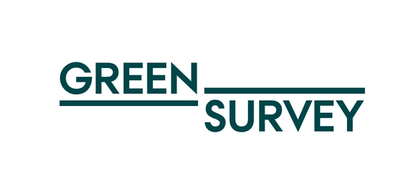
Use operational data for strategic decisions
In this case, we will explore how Orbit, through a data-driven mindset, helps LINK Architecture navigate unforeseen challenges and optimise their resources.
Industry
Architecture
Users
75
Implemented
2018
Use Case
Resource management
"It's not just about having a tool to keep track of deadlines and resources; it's about having the insight that allows us to react proactively before small problems become larger and thus harder to handle."
At LINK Architecture, they think big
LINK Architecture is one of Scandinavia's largest architectural firms with 500 employees spread across 15 offices in Denmark, Sweden, and Norway.
At LINK Architecture, they aim to contribute to a sustainable development of our society by creating high-quality architecture, which has an optimal balance between high environmental ambitions, economic profitability, and social sustainability.

Challenge
For an architectural firm, it is business critical if there is no overview and structure on available resources.
At LINK Architecture, they particularly focus on these challenges:
- Lack of insight into future occupancy rate. Planning too many or too few projects will result in an unhealthy business.
- Without data, it is difficult to assess whether there is capacity in the future to execute on upcoming and new projects
- Without clarity, LINK Architecture cannot anticipate and prepare for busy periods, which would force them to act reactively instead of proactively.
Overall, the challenge is that management risks having a blind spot in its business and therefore becomes limited in terms of making strategic decisions that benefit the company's future.
Solution
LINK Architecture has solved the problem by not only investing in an intuitive digital platform, namely Orbit, but has also implemented several internal processes that ensure a continuous update of data.
The processes are essential for Orbit not to stand alone, but remain an integrated and valuable part of the operation.
"An IT solution is never better than the data it gets to work with" - Frank Hyrsting
Here are a few examples of internal processes that LINK Architecture has implemented to ensure availability and updated data:
- Planning of resources for new projects starts already in the sales and offer phase.
- Creation of new employees in Orbit is part of the onboarding process.
- Checklists are part of case management and are activated for new projects via a project template - which means that cases are followed up on a monthly basis in relation to time, economy and resources.
- Integrations to for example Maconomy, ensure that master data on projects and employees is always updated.
Result
Having control of the occupancy rate has both given peace, and an operational tool for control in project planning and execution - also when it peaks.
"Having an overview of the business's occupancy rate, creates peace of mind - also when everyday life becomes hectic. For then we have a data-based basis to "put out fires" on." - Frank Hyrsting
LINK Architecture's work with Orbit has also given management a data-based foundation for making strategic decisions in relation to the company's future.
Keynotes from this case
Your success with a digital transformation of the organisation does not lie solely in how large an IT budget you can negotiate. The biggest investment is the internal implementation.
What LINK Architecture has done right is to set out a clear management strategy, which highlights continuous data updating and visibility of the data's value in the organisation. This strategy ensures that LINK Architecture's investment in digitalisation is not just passive management chatter, but actively drives the business forward.



